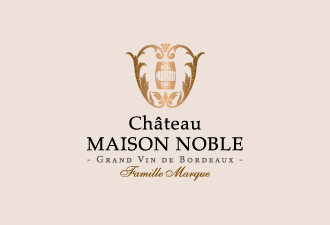WINE MAKING AT CHATEAU MAISON NOBLE
Wine-making techniques are both at a time modern and traditional:
The roughly 3100 hectoliters totally insulated winery - with both concrete and stainless steel tanks all equipped with the latest thermoregulation system - allows us to master quite efficiently the different temperatures all along the various stages of the wine-making
Each patch is vinified separately which allows the most effective use of the soil and the grape variety.
Before going into the tanks, the grapes that give red wine are lightly crushed to get a good juice.
During the first fermentation (called alcoholic fermentation) the juice is aired and the skins are regularly drenched in the juices to improve the oxygenation of the yeast and to bring out of the skins the colors and the tannins which will give the wine its final feature. We constantly check the temperature in the tanks so that it stays between 24 and 30° according to the different stage of fermentation and we also verify the density - alcohol control by volume - so to control the alcoholic fermentation.
When there is no sugar left in the juice the alcoholic fermentation is over, we then let the skins macerate with the wine for a length of time we adjust after tasting in order to bring out all the richness from the skins. We then press out the pulp and get a last and very concentrated juice that we will mix with the wine after several tastings; the press-juice gives the wine body, lushness and tannins.
The malolactic fermentation can now begin : malic acids turn into lactic acids…this biological process allows the wine to keep.
A few weeks later we barrel the wine from the oldest plants for 12 months, the rest of the harvest will mature in the tanks. Last comes the “finning” : this natural clarifying process will limit the sediments we can sometimes find in the older bottles.
All this process lasts 18 months.
As far as Rose wine is concerned, the wine-making technique is different : once the grapes are in the tank we separate the juices from the pulp within 24 to 48 hours so that the juice stays lightly colored (hence its rose name) Clairet is only made with Cabernet-Sauvignon which gives it a remarkable fruity taste; It is afterwards vinified at a low fermentation temperature (between 18 to 20°).
Every year is different, each vintage is unique and wine-making has to adapt to weather conditions and to the quality of the grapes.

